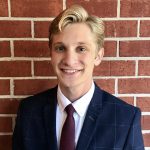The United States could face a shortage of up to 139,000 physicians by the year 2033, according to recent projections from the American Association of Medical Colleges. These projections suggest that expanding the role of non-physician providers including advanced practice registered nurses and physician assistants could offset the shortage among primary care physicians.
However, state-level scope of practice restrictions often prevent these non-physician providers from practicing to the full extent of their educations and training.
The American Association of Medical Colleges (AAMC) workforce modeling includes several potential scenarios. The “status quo” scenario assumes a continuation of current trends in workforce entry, hours worked, and retirement. Under this scenario, they say the shortage of primary care physicians will increase to 51,200 by 2033.
Increasing the role of advanced practice registered nurses (APRNs) and physician assistants (PAs) in the delivery of care could reduce demand for primary care physicians. The precise degree to which the labor of APRNs and PAs can be substituted for the labor of physicians is unknown. Therefore, the AAMC models two scenarios that assume different rates of substitution. Assuming a high rate of substitution (50 percent in primary care), the AAMC projects a surplus of 6,700 primary care physicians in 2033.
While 50 percent is the highest substitution rate included in AAMC’s modeling scenarios, research suggests that it is actually a fairly conservative estimate. In fact, a recent critique of the AAMCs methodology published in the Journal of the American Academy of Physician Assistants notes that “the weight of evidence points to a reasonable primary care substitution ratio at or above 75%.”
It is important to note that the potential “surplus” indicated by the AAMCs modeling does not suggest a surplus in the way economists use the term when discussing labor markets. The AAMC model uses 2018 as the base year and forecasts the number of physicians required to maintain the same level of care given expected demographic changes and entry into the labor market. Any projected shortages or surpluses are relative to 2018 rather than a calculated market equilibrium. In other words, a projected surplus would likely result in a higher level of care relative to 2018 rather than a glut of unused physicians. Additionally, as the Niskanen Center’s Robert Orr writes, “A surplus of physicians will exist when prospective medical students forgo the profession in favor of more attractive opportunities. Any other definition is either confused or dishonest.”
While advanced practice registered nurses and physician assistants could offset projected shortages, state-level scope of practice restrictions limit their ability to provide many services traditionally provided by physicians—even if they possess the necessary education and training. Scope of practice refers to the range of services that a healthcare professional is allowed to provide. For example, many states limit the ability of PAs and APRNs to prescribe medications, admit patients, and sign certain medical documents.
Nearly every state requires PAs to work under the supervision of, or in collaboration with, a physician. State laws regarding the supervision of APRNs are less consistent and vary by APRN specialty. There are broadly four types of APRNs, with nurse practitioners (NPs) being the most readily substituted for primary care physicians. About half of the states across the country allow NPs to practice independently without physician supervision.
Ample research suggests that loosening scope of practice restrictions can expand access to care and reduce costs without compromising on the quality of care. For example, a study published in the Journal of Law and Economics found that more restrictive scope of practice policies resulted in 3 percent to 16 percent higher costs for well-child visits with no difference in quality or safety. Another 2017 study conducted by various experts in the field concluded that “state regulations restricting NP SoP do not improve the quality of care.”
Physician groups have raised concerns about allowing advanced practice registered nurses and physician assistants to practice unsupervised. While there is little empirical evidence to suggest independent practice by APRNs and PAs reduces the quality of care, policymakers may nonetheless be wary of eliminating requirements.
To mitigate this uncertainty, several states that allow independent practice require a transition period before a non-physician provider is allowed to practice independently. Requiring a reasonable period of supervision, similar to residency requirements for physicians, could be a prudent measure to ensure APRNs and PAs are adequately experienced before they pursue independent practice.
As the AAMC modeling suggests, expanding the role of advanced practice registered nurses and physician assistants could offset the looming shortage of physicians. Of course, physicians are the most highly trained health care professionals and play a critical role in health care delivery. That is precisely why states should allow them to focus on the patients that need their attention most.
While further policy reforms may also be necessary to increase the supply of physicians, there is no good reason to prevent advanced practice registered nurses and physician assistants from practicing to the full extent of their training and education.

